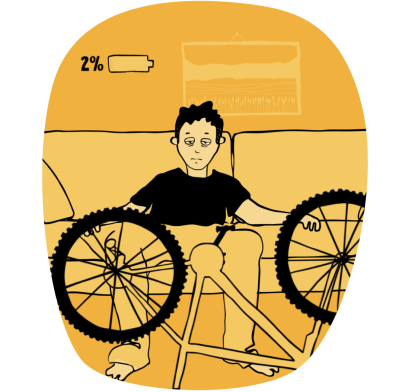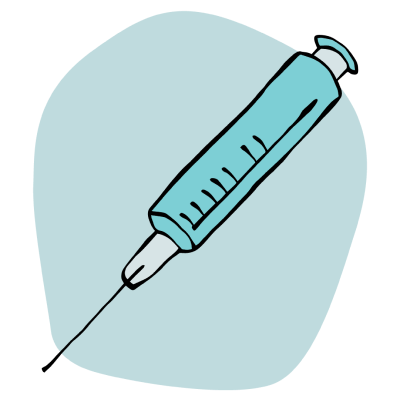
Miljoner svenskar bor i riskområde för TBE.
Det är störst risk för TBE i södra och mellersta Sverige – och viruset sprids gradvis norrut. En lång rad kommuner har också bedömts ha förhöjd förekomst av TBE.2 Fästingarna som sprider sjukdomen finns i en mängd olika miljöer, ofta på platser där även människor trivs.

TBE kan drabba hjärnan och ge livslånga besvär.
TBE kan utvecklas till allvarlig sjukdom och förändra en person för alltid.3 Hos ungefär var tredje som smittats sprids viruset vidare till hjärna och hjärnhinnor vilket kan ge allvarliga besvär.4 Någon behandling mot TBE finns inte. Det är därför viktigt att du vaccinerar dig mot TBE om du vistas i områden där TBE-smitta förekommer.

Det finns inget botemedel mot TBE. Men det finns vaccin.
Det finns ingen medicin som botar TBE, utan behandlingen som ges är bara symtomlindrande.5 Men det finns vaccin, som är tillgängligt via vaccinatörer. Det är enkelt att boka tid och att komma igång med sitt vaccinationsschema.
Så kan livet efter TBE kännas.
TBE kan orsaka allvarlig hjärninflammation. Men hur känns sjukdomen för dem som drabbats? Berättelsen i filmen kommer från en person som drabbats av TBE.

“Det är som att ha miljoner tankar i huvudet samtidigt. Och man kan inte greppa en enda av dem.”
Citat från person som drabbats av TBE.
Referenser
1. Hjärnskadeförbundet Hjärnkraft, TBE - Det hände mig, https://hjarnkraft.se/tbe-det-hande-mig/ [Hämtad: 2024-02-12]
2. Folkhälsomyndigheten, Områden med förhöjd TBE, https://www.folkhalsomyndigheten.se/smittskydd-beredskap/smittsamma-sjukdomar/tick-borne-encephalitis-tbe/omraden-med-forhojd-forekomst-av-tbe/ [Hämtad: 2024-02-12]
3. Hjärnskadeförbundet Hjärnkraft, TBE - Det hände mig
4. 1177, TBE - Fästingburen hjärninflammation, https://www.1177.se/sjukdomar--besvar/hjarna-och-nerver/infektioner-i-hjarna-och-nerver/tbe---fastingburen-hjarninflammation/ [Hämtad: 2024-02-12]
5. Folkhälsomyndigheten, Vanliga frågor om TBE (Tick Borne Encephalitis) https://www.folkhalsomyndigheten.se/smittskydd-beredskap/smittsamma-sjukdomar/tick-borne-encephalitis-tbe/vanliga-fragor-om-tbe/ [Hämtad: 2024-02-12]
6. Folkhälsomyndigheten, Tick Borne Encephalitis (TBE) – sjukdomsstatistik, https://www.folkhalsomyndigheten.se/folkhalsorapportering-statistik/statistik-a-o/sjukdomsstatistik/tick-borne-encephalitis-tbe/?tab=tab-report [Hämtad: 2024-02-12]
7. Hjärnskadadeförbundet Hjärnkraft, TBE - Det hände mig
.